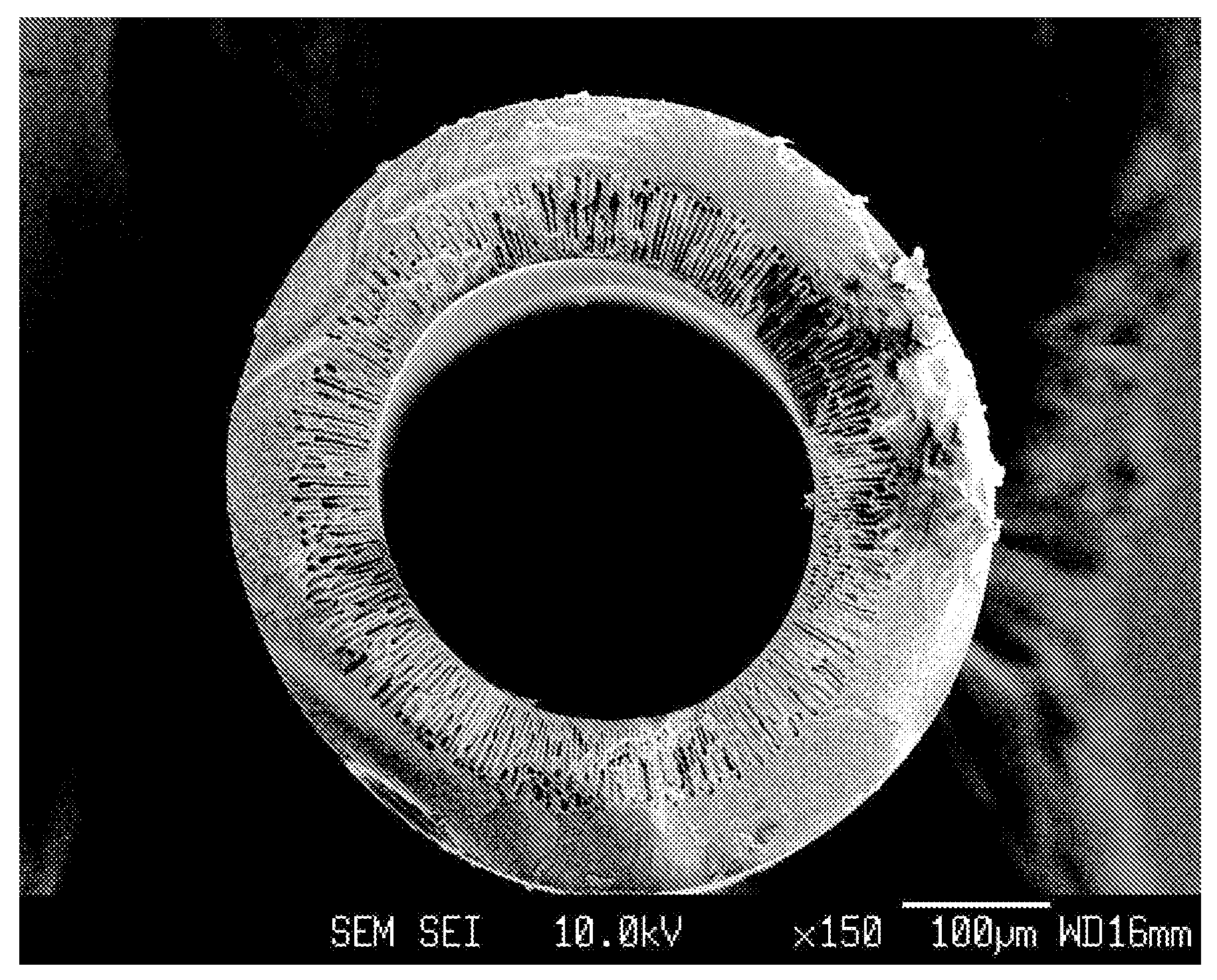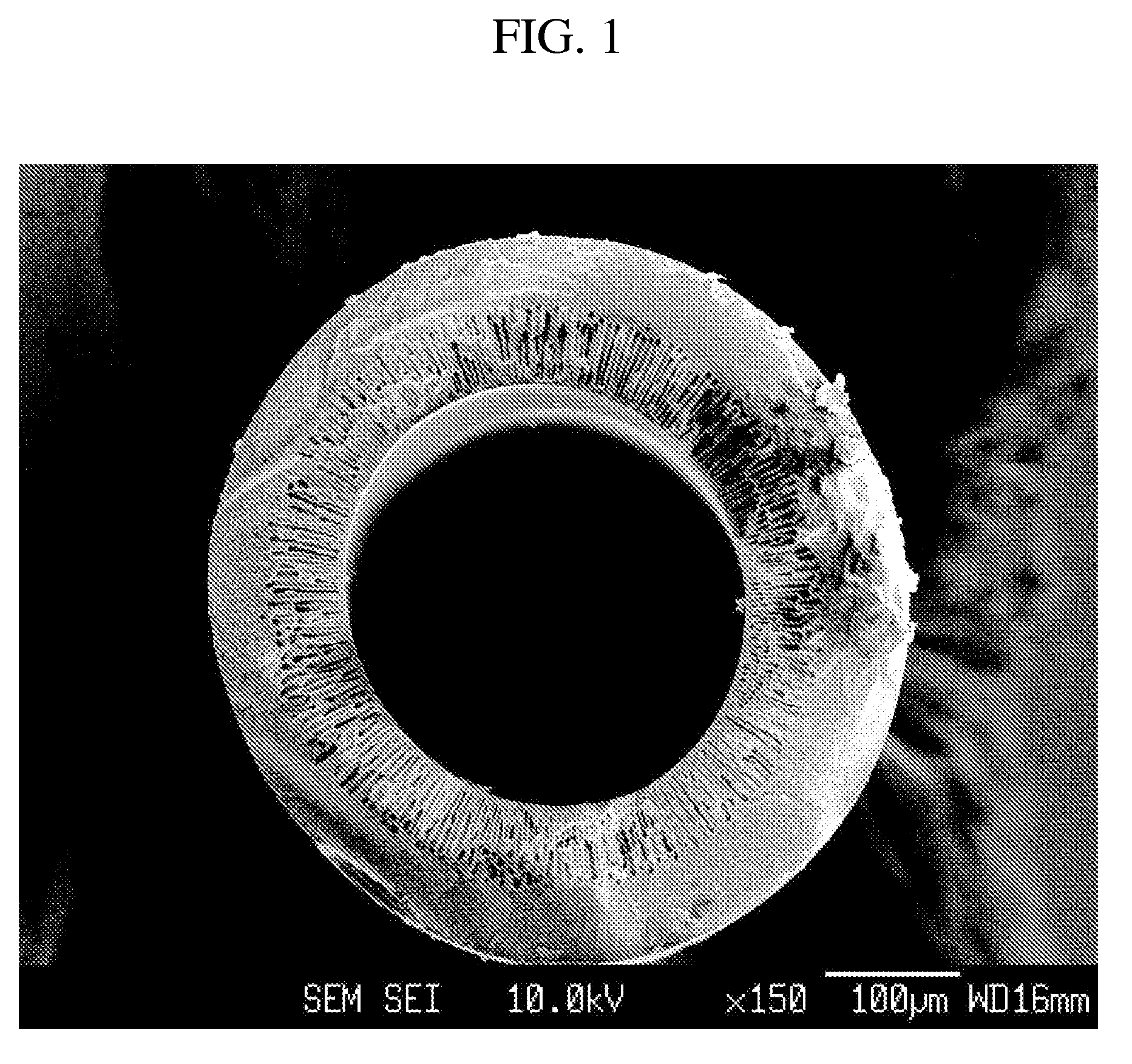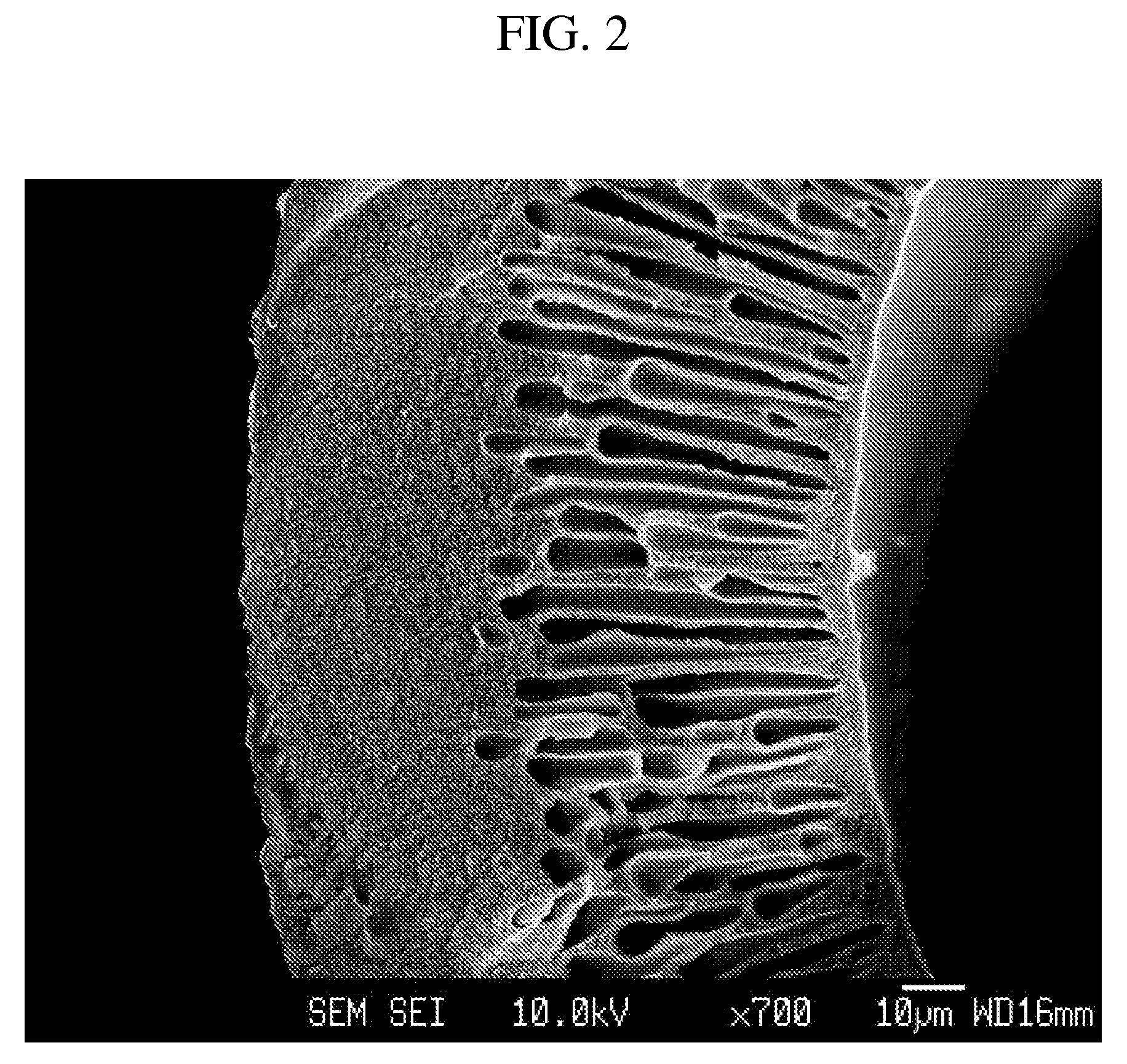Polyimides dope composition, preparation method of hollow fiber using the same and hollow fiber prepared therefrom
a technology of polyimide and composition, which is applied in the field of polyimide dope solution composition, can solve the problems of limited to a few, difficult to obtain separation and permeation capabilities beyond a predetermined upper limit, and relatively short history of gas separation using the membrane process, etc., to achieve high fractional free volume, increase polymer backbone strength, and improve the effect of gas permeability and selectivity
- Summary
- Abstract
- Description
- Claims
- Application Information
AI Technical Summary
Benefits of technology
Problems solved by technology
Method used
Image
Examples
example 1
[0124]As depicted in Reaction Scheme 5 below, a hollow fiber comprising polybenzoxazole represented by Formula 51 are prepared from the polyhydroxyamic acid-containing dope solution.
[0125](1) Preparation of Polyhydroxyimide
[0126]A 250 ml reactor fitted with a teflon stirring system, an inlet for an inert gas, such as nitrogen, and placed in an oil bath to constantly maintain the reaction temperature at −15° C. The reactor was charged with 3.66 g (0.1 mol) of 2,2′-bis(3-amino-4-hydroxy-phenyl)hexafluoropropane and N-methylpyrrolidone (NMP) as a solvent. 44.4 g (0.1 mol) of 4,4′-(hexafluoroisopropylidene)diphthalic anhydride was slowly added into the solution. Then, the solution was allowed to react for about 4 hours to prepare a pale yellow viscous polyhydroxyamic acid. Subsequently, the oil bath was heated to temperature of 80° C. and 16.1 ml (0.2 mol) of pyridine and 18.9 ml (0.2 mol) of acetic anhydride was added into the solution and allowed to react for about 12 hours at 180° C....
example 2
[0133]A hollow fiber was prepared in the same manner as in Example 1, except that the polyhydroxyimide was prepared without pyridine and acetic anhydride by solution-thermal imidization at 200° C. for 12 hour in solution.
[0134]The hollow fiber thus prepared had a weight average molecular weight of 19,240 Da. As a result of FT-IR analysis, characteristic bands of polybenzoxazole at 1,553 cm−1, 1,480 cm−1 (C═N) and 1,058 cm−1 (C—O) which were not detected in polyimide were confirmed.
example 3
[0135]A hollow fiber comprising a polybenzothiazole represented by Formula 52 was prepared through the following reactions.
[0136]A hollow fiber thermally rearranged into polybenzothiazole represented by Formula 52 was prepared in the same manner as in Example 1, except that 20.8 g (0.1 mol) of 2,5-diamino-1,4-benzenedithiol dihydrochloride and 44.4 g (0.1 mol) of 4,4′-(hexafluoroisopropylidene)diphthalic anhydride as starting materials were reacted to prepare thiol group (—SH)-containing polyimide.
[0137]The hollow fiber thus prepared had a weight average molecular weight of 32,290 Da. As a result of FT-IR analysis, characteristic bands of polybenzothiazole at 1,484 cm−1 (C—S) and 1,404 cm−1 (C—S) which were not detected in polyimide were confirmed.
PUM
| Property | Measurement | Unit |
|---|---|---|
| temperature | aaaaa | aaaaa |
| temperature | aaaaa | aaaaa |
| flow rate | aaaaa | aaaaa |
Abstract
Description
Claims
Application Information
 Login to View More
Login to View More - R&D
- Intellectual Property
- Life Sciences
- Materials
- Tech Scout
- Unparalleled Data Quality
- Higher Quality Content
- 60% Fewer Hallucinations
Browse by: Latest US Patents, China's latest patents, Technical Efficacy Thesaurus, Application Domain, Technology Topic, Popular Technical Reports.
© 2025 PatSnap. All rights reserved.Legal|Privacy policy|Modern Slavery Act Transparency Statement|Sitemap|About US| Contact US: help@patsnap.com



